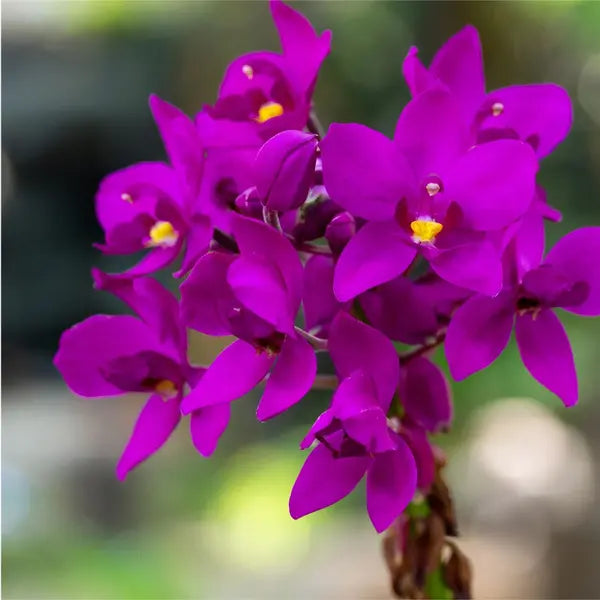
Purple Ground Orchid Bletilla
Selling Size : Single Plant | Pot Included | Secure Packing
The Bletilla striata, commonly known as the Purple Ground Orchid or Chinese Ground Orchid, is a beautiful and surprisingly hardy terrestrial orchid. Unlike some of its more finicky tropical relatives, it's a great choice for temperate gardens and is relatively easy to care for.
Here is a comprehensive guide to caring for your Bletilla striata:
Light
Partial shade is ideal. This orchid thrives in a location that receives dappled sunlight or morning sun and is protected from the intense afternoon heat.
Too much sun: Too much direct, hot sun can scorch the leaves.
Too much shade: While it can tolerate full shade, it will likely produce fewer flowers.
Outdoor placement: Plant it in a woodland garden, under deciduous trees, or on the north or east side of a house where it gets some shade.
Watering
Keep the soil consistently moist but not waterlogged. Good drainage is crucial to prevent root rot, which is a common problem for orchids.
Watering frequency: Water regularly during the active growing season (spring and summer).
Winter dormancy: During the fall and winter, the foliage will die back as the plant enters dormancy. Reduce or stop watering entirely during this period. The plant's corm-like pseudobulbs store nutrients and moisture to get through the winter.
Soil and Potting
Well-draining, organically rich soil is a must. The plant needs a mix that retains some moisture but allows excess water to drain away quickly.
Ideal soil mix: Amend your garden soil with organic matter like compost, leaf mold, or peat moss. This will improve both moisture retention and drainage.
Planting depth: Plant the corm-like pseudobulbs about 2-4 inches deep in the soil in the spring.
Containers: Bletilla can be grown successfully in containers, especially in colder climates where they can be moved indoors for winter protection. Use a pot with ample drainage holes.
Temperature and Hardiness
Hardy in many temperate zones. Bletilla striata is typically hardy in USDA Zones 5-9.
Winter care: In colder zones (like USDA Zones 5 and 6), apply a thick layer of mulch (such as straw or shredded bark) over the planting area in late autumn to protect the pseudobulbs from hard freezes.
Potted plants: If you're growing Bletilla in a container in a cold climate, you can move the pot to a cool, dry, frost-free location like a garage or basement for the winter.
Fertilizer
Fertilize with a light hand. Over-fertilizing can harm the symbiotic fungus that Bletilla needs to thrive.
Frequency: Apply a light, balanced, granular fertilizer in early spring as new growth emerges. You can also use a diluted water-soluble fertilizer a few times during the growing season.
Compost: Top-dressing the soil with a layer of compost each spring is an excellent way to provide nutrients naturally.
Maintenance and Dormancy
Deciduous foliage: The sword-like, pleated leaves of Bletilla striata will die back in the fall. This is a normal part of its life cycle and signals the start of its winter dormancy. Do not be alarmed!
Remove spent flowers: Cut back the flower stalks after they have finished blooming to tidy up the plant.
Division: Bletilla will naturalize and spread slowly over time. You can divide the clumps every few years in the fall to create new plants and prevent overcrowding.

